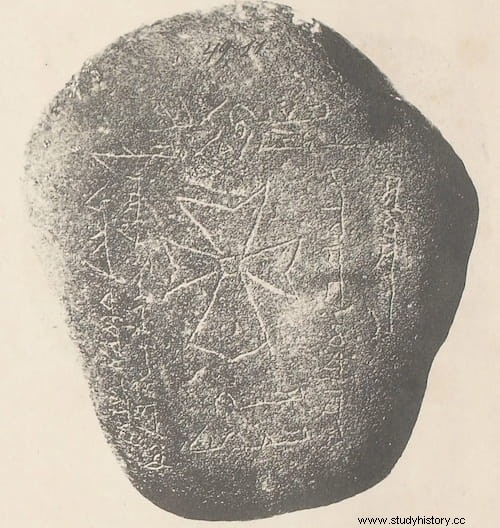In 1347, the plague first entered the Mediterranean through trading ships carrying goods from the Black Sea territories of the Golden Horde. The disease then spread across Europe, the Middle East, and North Africa, claiming up to 60% of the population in a large-scale outbreak known as the Black Death.
This first wave later spread into a 500-year pandemic, the so-called Second Plague Pandemic, which lasted until the early 19th century.
The origins of the Second Plague Pandemic have long been debated. One of the most popular theories has supported its origin in East Asia, specifically in China. However, the only archaeological finds available so far come from Central Asia, near Lake Issyk Kul, in present-day Kyrgyzstan.
These findings demonstrate that an epidemic devastated a local trading community in the years 1338 and 1339. Specifically, excavations conducted nearly 140 years ago revealed tombstones indicating that individuals died in those years from an unknown epidemic or plague. Since their first discovery, the tombstones, inscribed in the Syriac language, have been the cornerstone of controversy among scholars as to their relevance to Europe's Black Death.

In this study, an international team of researchers analyzed ancient DNA from human remains, as well as historical and archaeological data from two sites that contained plague inscriptions. The team's first results were very encouraging, as DNA from the plague bacterium, Yersinia pestis was identified. , in individuals with the year 1338 inscribed on their tombstones.
We were finally able to prove that the epidemic mentioned on the tombstones was indeed caused by the plague , says Phil Slavin, one of the lead authors of the study and a historian at Sterling University in the UK.
Researchers have found the source strain of the Black Death
But could this have been the origin of the Black Death? Researchers have associated the start of the Black Death with a massive diversification of plague strains, an event called the Big Bang of diversity of the plague.
But the exact date of this event could not be precisely estimated, and it was thought to have occurred sometime between the 10th and 14th centuries. Now the team has assembled the complete ancient plague genomes from the Kyrgyz sites and investigated their relationship to this Big Bang event.
We discovered that ancient strains from Kyrgyzstan are situated exactly at the node of this massive diversification event. In other words, we have found the source strain of the Black Death and even know its exact date, i.e. the year 1338 , says Maria Spyrou, lead author and researcher at the University of Tübingen.

But where does this strain come from? Did it evolve locally or spread in this region from somewhere else? The plague is not a disease of humans; the bacterium survives in wild rodent populations around the world, in so-called plague reservoirs.
Therefore, the ancient Central Asian strain that caused the 1338-1339 epidemic around Lake Issyk Kul must come from one of those reservoirs. We discovered that the modern strains most closely related to the ancient strain are found today in plague reservoirs around the Tian Shan Mountains, thus very close to where the ancient strain was found. This points to an origin of the Black Death's ancestor in Central Asia , explains Johannes Krause, lead author of the study and director of the Max Planck Institute for Evolutionary Anthropology.
The study demonstrates how the investigation of well-defined archaeological contexts and the close collaboration between historians, archaeologists and geneticists can solve great mysteries of our past, such as the origins of the infamous Black Death, with unprecedented precision.
